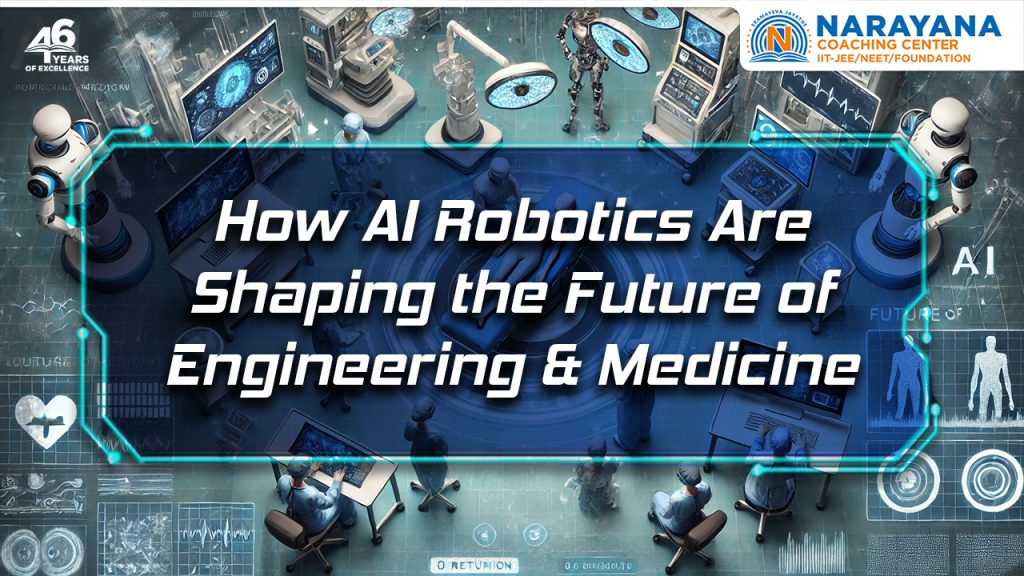
Artificial Intelligence (AI) and robotics are transforming the way we live, work, and even receive medical care. From self-driving cars to robotic surgeries, these technologies are revolutionising industries and shaping the future. But how exactly do AI and robotics impact engineering and medicine? And what do these changes mean for the future? Let’s explore how these innovations are driving groundbreaking advancements in these fields.
What Are AI and Robotics?
Before exploring their impact, it’s important to understand what AI and robotics are.
- Artificial Intelligence (AI): AI refers to computer systems capable of performing tasks that typically require human intelligence, such as problem-solving, learning, and decision-making. Examples include virtual assistants like Siri or Google Assistant and self-learning systems like ChatGPT.
- Robotics: Robotics is the field of designing and building machines that can carry out tasks autonomously or semi-autonomously. These machines range from simple robotic arms used in factories to humanoid robots that assist in healthcare.
Together, AI and robotics are creating machines that can think, learn, and even perform surgeries!
AI & Robotics in Engineering
1. Smart Automation in Factories
AI-powered robots are now widely used in manufacturing plants to automate repetitive tasks, improving efficiency and reducing human error. For example, car manufacturers employ robotic arms to assemble vehicles with precision, increasing production speed while maintaining high quality.
2. AI in Structural Engineering
AI helps engineers in designing safer and more efficient buildings. Through AI-driven simulations, engineers can predict how a structure will perform under different conditions, such as earthquakes or extreme weather, thereby enhancing safety and reliability.
3. Robotics in Space Exploration
AI-powered robots, such as NASA’s Perseverance rover, help scientists explore Mars and other planets. These robots can analyse soil, capture images, and even search for signs of life—all without human intervention.
AI & Robotics in Medicine
1. Robotic Surgery
AI-powered robotic systems, such as the Da Vinci Surgical System, allow surgeons to perform complex surgeries with greater precision and minimal invasiveness. These robots reduce the risk of complications and speed up patient recovery times.
2. AI in Medical Diagnosis
AI algorithms can analyse medical images (like X-rays, MRIs, and CT scans) much faster and more accurately than humans. For example, AI can detect cancer cells in medical scans at an early stage, increasing survival rates.
3. Smart Prosthetics & Bionics
AI-powered prosthetic limbs can adapt to a user’s movement, providing better control and mobility. Some bionic limbs even use brain signals to function, allowing individuals to regain lost abilities.
The Future of AI & Robotics in These Fields
The future looks exciting for AI and robotics in engineering and medicine. Here are some trends to watch:
- Self-Healing Materials: AI-powered materials that can repair themselves when damaged, revolutionising the construction and aerospace industries.
- AI-Powered Drug Discovery: AI is helping scientists develop new medicines faster, potentially leading to cures for diseases like cancer.
- Autonomous Medical Assistants: AI-powered robots may soon assist doctors in hospitals, helping with patient care and administrative tasks.
As AI and robotics continue to evolve, the possibilities are limitless. For students interested in STEM careers, now is the perfect time to explore opportunities in these cutting-edge fields.
Conclusion
AI and robotics are not just futuristic concepts—they are shaping the present and the future of engineering and medicine. From designing safer buildings to performing life-saving surgeries, these technologies are creating a smarter and healthier world. As these fields continue to grow, students passionate about innovation and technology will have incredible career opportunities ahead.
Are you ready to be a part of this exciting future?
FAQs
1. Can AI completely replace engineers and doctors?
No, AI is designed to assist professionals by making their work more efficient, but human expertise is still essential for decision-making and creativity.
2. How do AI and robotics improve patient care?
AI helps doctors diagnose diseases faster, while robots assist in surgeries and rehabilitation, improving overall healthcare quality.
3. Are robots in factories taking away jobs?
While automation replaces some repetitive tasks, it also creates new job opportunities in AI development, robotics engineering, and machine maintenance.
4. Can AI predict diseases before they happen?
Yes, AI can analyse patterns in medical data to predict potential health risks, allowing for early intervention and prevention.
5. How can students prepare for a career in AI and robotics?
Students can start by learning coding, mathematics, and science subjects. Participating in robotics competitions and online courses can also provide valuable experience.
